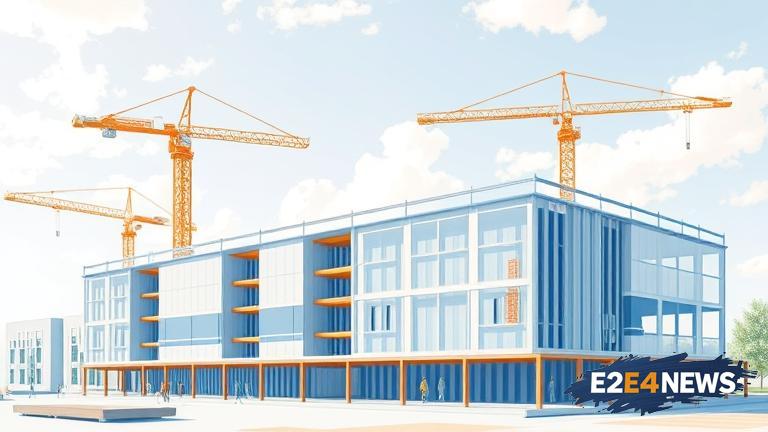The construction industry has traditionally been slow to adopt new technologies, but the advent of Building Information Modelling (BIM) and modular construction is revolutionizing the way buildings are designed, constructed, and managed. BIM is a digital representation of the physical and functional characteristics of a building, allowing for enhanced collaboration, accuracy, and efficiency. Modular construction, on the other hand, involves the use of prefabricated modules that are assembled on-site, reducing waste, improving quality, and increasing speed. The integration of BIM and modular construction is enabling the creation of more complex and sophisticated buildings, with improved sustainability and energy efficiency. One of the key benefits of BIM is its ability to facilitate collaboration among stakeholders, including architects, engineers, contractors, and owners. By using a shared digital model, all parties can access and contribute to the design and construction process, reducing errors and miscommunication. Modular construction is also gaining popularity due to its ability to reduce waste and improve quality. By manufacturing modules in a controlled factory environment, construction teams can minimize waste and ensure that all components meet strict quality standards. Additionally, modular construction allows for faster construction times, as modules can be assembled on-site quickly and efficiently. The use of BIM and modular construction is also enabling the creation of more sustainable buildings, with improved energy efficiency and reduced environmental impact. For example, BIM can be used to optimize building orientation, layout, and systems, reducing energy consumption and improving occupant comfort. Modular construction can also incorporate sustainable materials and systems, such as solar panels and green roofs. Furthermore, the integration of BIM and modular construction is enabling the creation of more resilient and adaptable buildings, with improved ability to withstand natural disasters and other disruptions. The use of BIM and modular construction is also driving innovation in the construction industry, with new technologies and techniques being developed to support these approaches. For instance, the use of drones and other unmanned aerial vehicles (UAVs) is becoming increasingly popular for site surveying and monitoring. Similarly, the use of virtual and augmented reality is enhancing the design and construction process, allowing stakeholders to visualize and interact with buildings in a more immersive and engaging way. The adoption of BIM and modular construction is also being driven by government policies and regulations, which are increasingly recognizing the benefits of these approaches. For example, the UK government has established a range of initiatives to support the adoption of BIM, including the development of standards and guidelines for its use. Similarly, the US government has established programs to support the development of modular construction, including the creation of new manufacturing facilities and training programs. Despite the many benefits of BIM and modular construction, there are also challenges to their adoption, including the need for significant investment in new technologies and training. Additionally, there may be cultural and organizational barriers to the adoption of these approaches, particularly in traditional construction companies. However, as the construction industry continues to evolve and innovate, it is likely that BIM and modular construction will play an increasingly important role in shaping the built environment. In conclusion, the integration of BIM and modular construction is revolutionizing the construction industry, enabling the creation of more efficient, sustainable, and resilient buildings. As these approaches continue to evolve and improve, it is likely that they will have a profound impact on the way we design, construct, and manage buildings, and will play a key role in shaping the future of the construction industry.





